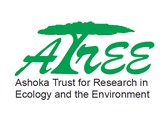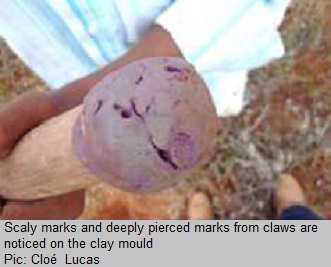Any and all opinions expressed in
this newsletter are solely those of the author(s) and do not reflect the opinion of ATREE.
Centre for Excellence
in Conservation Science
Royal Enclave,Srirampura,Jakkur
Post
Bangalore-560064
Telephone: 080-23635555 (EPABX)
Fax : 080- 23530070
A few of us had hit upon the requirement of
observing the habits of owls in paddy fields,
since farmers in this area have traditionally
tried to ‘invite’ them to their fields by erecting
a country made pole, to rid them of rats which
can destroy crops. The widely used camera-
trap, a motion or heat sensitive camera that
can obtain pictures of creatures from a short
range was found to be a very expensive
option because even a small set of cameras
would cost an exorbitant sum of money to be
extensively planted in widely grown paddy. Moreover, owls are active during the night
when conventional methods of observation
are not possible. Hence we borrowed an
idea from kids who use modelling clay to
create forms and shapes.
A sheath or lump of clay was fixed onto
slender poles, or on locally made owl perches
and fence posts to be planted in and around
paddy fields. In spite of a fairly simple design
to learn about their unknown habits during the
dark night, it was almost a couple of weeks since we realized how effective these poles
would be. For almost two full days no bird
approached it, not even the ones that are
active in broad daylight, until a small blue
kingfisher finally did. An amusing set of
observation came in on an early morning
when eight of us teamed up in a large
bungalow which had windows looking out in
every direction into large spaces of the
garden, fields, and forests, with a clay-pole at
an obtrusive distance from the window. After
a few hours of observations there was just one instance of a curious babbler, which flew
in to peck at the red clay-topped knob, and
flew back immediately. In the dark night, we
simply did not know what was happening
unless the clay pads showed markings of
claws and feet. However, in a fence post near
the fields, on the very next day of installation,
we had come across rough scaly marks on
the clay pad. It simply did not resemble the
deep claw marks that were earlier seen on
bird-perched clay knobs. On closer
examination of those markings, we realized that they may have been coming from the
rough scaly pads the owls possess under
their feet to grip their prey, and, led us into
planting them more extensively in a paddy
field for further observations.
Editorial
Team
Editor: Allwin
Jesudasan
Associate editor: Rajkamal
Goswami
Editorial Review: R.
Ganesan, M. Soubadra Devy, T. Ganesh
Design and presentation:
Kiran Salagame
A S H O K A T R U S T F
O R R E S E A R C H I N E C O L O G Y A N
D T H E E
N V I R O N M E N T
If you have any suggestions or comments
please let us know through the boxes below






